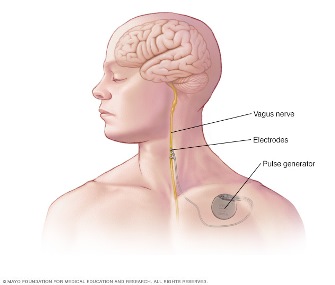
Neurology (Brain & Nerves)
Vagus Nerve Stimulation

Medications are typically the first line of treatment for patients with epilepsy. However, vagus nerve stimulation may be helpful if you continue to struggle with breakthrough seizures. It has effectively treated seizures for approximately 20 years, especially in patients who have partial seizures. Studies found that patients experienced a significant reduction, up to 50 percent, in the frequency and intensity of seizures after vagus nerve stimulation.
You have one vagus nerve on each side of your body, running from your brainstem through your neck to your chest and abdomen. Vagus nerve stimulation is a system in which a device, similar to a pacemaker, is implanted in your chest wall by an ear, nose and throat (otorhinolaryngology) physician. Then, the device is connected to a wire that is wrapped around your left vagus nerve. The procedure uses a small incision, and most patients can go home the same day as the procedure.
After a short healing time, a neurologist turns on the device to a low setting during a clinic visit. Small electrical signals are sent to this nerve on a scheduled basis. The device can be programmed to deliver electric impulses at various times, frequencies and currents. Each week, the device is monitored and adjusted until you reach a peak tolerance or find seizure control.